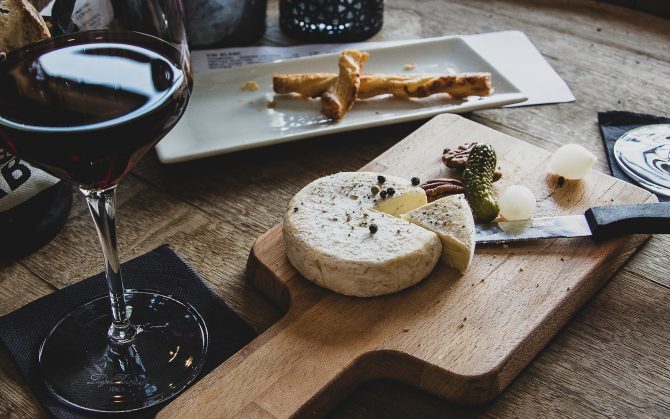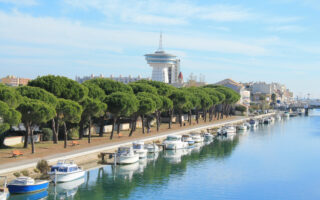How to Host a French Apéro Like a Local
Essential Reading


Are you thinking of inviting your neighbours around to get to know them a little better? Then, there’s nothing better than inviting them for an apéritif or apéro, as it is more often referred to in France. However, to avoid making all the social gaffs we made on arriving here in France, read on!
Hosting an apéro for friends or neighbours in France
If you’re looking to make friends in France, get friendly with your neighbours, and integrate more into French culture, an informal ‘apéro’ is the ideal opportunity. Essentially, it’s inviting friends over for drinks and nibbles.
Inviting your guests
An informal verbal invitation is all that is needed but do remember to state a time. Apéros normally take place between 5pm and 7pm in order to allow time for the preparation of the evening meal afterwards – most of our French friends would not dream of eating before 9pm, and an aperitif is intended to stimulate the appetite (and probably tide you over a little!)
Apéros usually last roughly an hour and seldom more than two hours for this reason. However, apéros amongst close friends can often turn into an ‘aperitif dinatoire’, which can last until the early hours and ends up more like an impromptu buffet with lots of sharing dishes. But that’s a whole other subject!
Giving a precise time, do not worry if your guests are a little late – here in the Charente we have “le quart d’heure Charentais” and in France, as a whole, there is “le quart d’heure de politesse” which is a 15-minute window in which it is acceptable to be late, and all adds to the ‘no rush’ slower pace of life here.
Table settings
Do not worry about this at all. From a naked table to a simple, everyday tablecloth, anything goes. It is informal with friends and entirely up to you. A few napkins might come in handy.
Depending on numbers, either everyone sits around the table to drink, nibble and chat or set up one table or area (kitchen worktop, for example) for food so that guests can mill about chatting if you have a large number of guests.
Drinks – what to serve?
Traditionally, an apéritif is usually (but not always) something dry to stimulate the appetite.
Here in the Charente, Pineau des Charentes is commonplace, and in the summer, there’s nothing more popular than an icy-cold Pineau blanc. In wintertime, it’s Pineau rouge. Or, equally common here is a VSOP (young) Cognac mixed with tonic or agrumes (think of the ‘totally tropical taste’ fizzy drink) over ice. This is the cocktail that completely switched my tastebuds onto Cognac!
Equally, a gin and tonic is fabulous, and the French make some fabulous gins.
A dry white wine is a good choice, and with no less than 26 varieties of grape grown in the Charente, as with many regions in France, we are spoilt for choice. A local sauvignon blanc is just perfect.
If, like my husband, you prefer a beer, it’s no problem. Remember, this is a relaxed affair.
Do remember to cater for any children who may be coming. A range of fruit-flavoured ‘sirops,’ water, local fruit juice and/or fizzy drinks should do the trick.
Likewise, a couple of non-alcoholic ‘adult’ drinks is thoughtful. For example, a ginger beer with pomegranate juice cocktail over ice in the summer or a bottle of fizzy raisin juice etc.
Nibbles – tips and ideas
Anything bite-sized, as no plates are required. The idea is this is easy, with no fuss, no frills and no mess before your main meal.
Cocktail sticks are commonplace, and a handy stabbing implement. A couple of stations of these can be useful depending on what you are serving.
The easiest option, of course, is crisps, peanuts/nuts. However, if you are looking to provide a little more, you have options.
If time is an issue, any major supermarket sells a selection of aperitif-sized bites. Think charcuterie board, cornichons, olives, marinated peppers, squid bites, baby mozzarella balls, mini chorizo sausages, cheese cubes, cherry tomatoes, breadsticks with dips and crudites.
If you prefer homemade, why not bake a rectangular quiche, allow to cool, and then slice it into cubes? Mini cheese scones with soft, young goat’s cheese or home-made cheese pastry twists? Even a homemade pizza cut into little squares? Gougères are utterly delicious – little domes of savoury, cheesy choux pastry. The list is endless, and you get the idea.
The key is bitesize, savoury and a little variety for all tastes. Especially if children are going to be present – if the children are happy, the adults are happy.
If you are thinking of a world-food theme such as Indian, Thai or Mexican, for example, do be absolutely sure to know your audience. We have found tastes to be very conservative here in the countryside, and as a huge generalisation, spicy food (by UK standards) is not commonplace throughout France. That is not to say people might not like to try, just be mindful of different palates and offer a range of options.
Welcoming your guests
Always welcome and say goodbye to your guests in the French way – with the “Bises”.
Often for men, a handshake pulled into a back-slapping hug and then kisses if you know each other reasonably well.
For women, handshaking is less common and may be more of a friendly hand-squeeze than a shake in the countryside – with kisses on each cheek instead or as well!
Now, depending on whereabouts in France you are, the etiquette will differ. In some areas, three or four kisses are the norm and a handshake too!
Toasting
When you serve your drinks, remember not to over-fill glasses – two-thirds to three-quarters full (you know your guests).
It is traditional for the host to propose a toast for everyone to begin. This is usually a simple:
“Sante!” (Good Health)
“Tchin-tchin” (Bottoms up)
or “a la Votre!” (Your Good Health)
It is, however, important to look everyone in the eye when clinking glasses, as I found out, to my horror – I am apparently now cursed with seven years of bad sex for not observing this rule back in 2017…
Cheers!
Local Life in France
From shopping at the supermarket to sending a parcel at Post Office, finding your local dechetterie to who to call in an emergency—FrenchEntrée is here to help with every aspect of day-to-day living in France. Read our Essential Reading guides for advice on living in France, visit our Shopping zone or Pets zone, or brush up your language skills with our handy learning French resources.
Share to: Facebook Twitter LinkedIn Email
By Carol Paylor
Leave a reply
Your email address will not be published. Required fields are marked *




REPLY
REPLY
REPLY